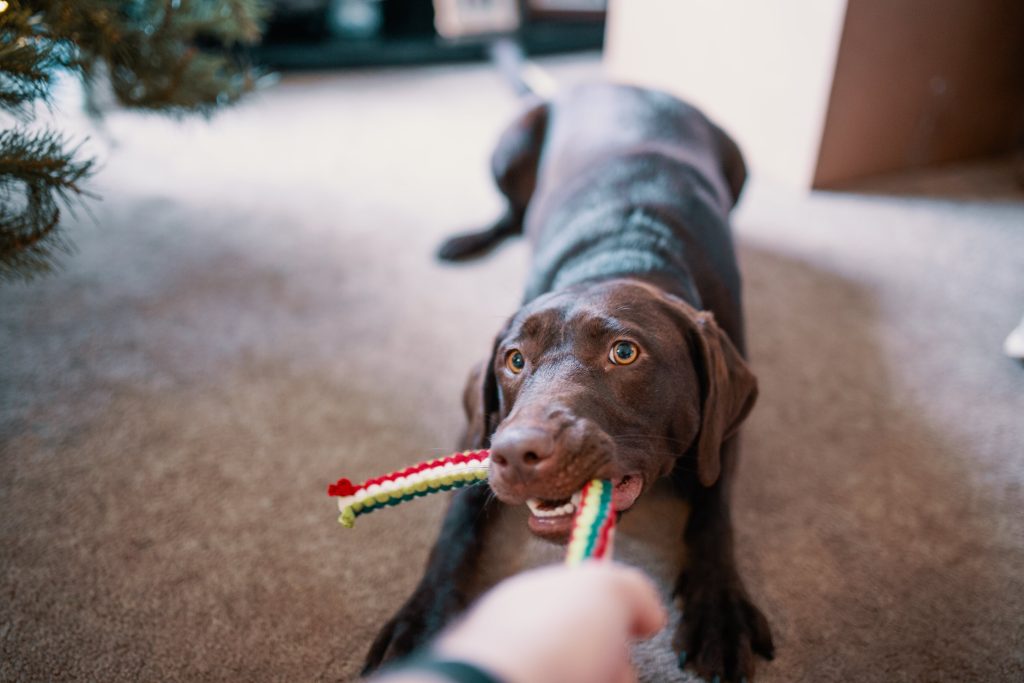Why Do Dogs Destroy Their Favorite Toys?
Introduction: Why Do Dogs Destroy Their Favorite Toys?
Man’s best friends, our faithful companions, frequently display actions that bewilder us. A prevalent situation confronting dog owners revolves around the damage inflicted upon their cherished pets’ preferred playthings. This piece will investigate the intricacies of the question, “Why do dogs destroy their favorite toys?” as we delve into the underlying reasons for this confounding behavior, offering effective strategies for resolution.

Understanding Canine Instincts:
Dogs Chew as a Natural Instinct: Canine ancestors were hunters, and chewing served as a way to maintain dental health and strengthen jaw muscles. Understanding this instinct sheds light on why modern dogs still have a tendency to chew on objects.
The Role of Teething: Puppies, in particular, experience teething, a phase where chewing provides relief from discomfort. Exploring this aspect helps dog owners comprehend why their furry friends might target toys during this stage.
Mimicking Hunting Behavior: Dogs have an innate hunting instinct. Destroying toys can be a manifestation of this behavior, allowing them to engage with their toys as they would with prey.
Psychological Factors:
Boredom and Lack of Stimulation: Dogs, especially those left alone for extended periods, may resort to destructive behavior out of boredom. Understanding this aspect prompts owners to provide mental stimulation and engaging activities.
Stress and Anxiety: Dogs can experience stress and anxiety, leading to destructive tendencies. Identifying triggers and addressing the underlying issues can mitigate this behavior.
Seeking Attention: Dogs may destroy toys as a way to garner attention, even if it’s negative. Recognizing this motivation helps owners respond appropriately.
Choosing the Right Toys:
Durable Materials: Opting for toys made from durable materials can significantly reduce the likelihood of destruction. Exploring suitable options is essential for a dog’s satisfaction and a longer-lasting playtime.
Interactive Toys: Toys that stimulate a dog’s mind and encourage interaction can divert destructive tendencies towards constructive play. We’ll explore the variety available in the market.
Rotating Toy Selection: Keeping a rotation of toys prevents monotony and sustains a dog’s interest. Understanding the importance of variety guides owners in maintaining an engaging toy collection.
Training and Behavioral Solutions:
Positive Reinforcement: Rewarding positive behavior reinforces good habits. Implementing positive reinforcement techniques can redirect destructive tendencies.
Redirecting Destructive Behavior: Guiding a dog towards appropriate outlets for their chewing instincts is crucial. Effective redirection strategies will be discussed.
Professional Training Assistance: In some cases, seeking professional training assistance becomes necessary. We’ll explore when and how to enlist the help of a professional dog trainer.
Health Considerations:
Dental Health: Chewing contributes to dental health, but excessive destruction may indicate dental issues. Recognizing signs of poor oral health is essential for a dog’s overall well-being.
Allergies or Discomfort: Dogs may destroy toys if they experience allergies or discomfort. Identifying and addressing these issues ensures a dog’s comfort during playtime.

DIY Toy Alternatives:
Homemade Toy Ideas: Crafting toys at home can be a fun and cost-effective way to provide entertainment. We’ll share creative DIY ideas while emphasizing safety precautions.
When to Seek Professional Help:
Extreme Destructive Behavior: Recognizing when a dog’s behavior becomes excessively destructive is vital. Knowing when to seek professional help ensures a comprehensive approach to behavioral issues.
Persistent Behavioral Issues: Addressing persistent behavioral problems requires professional intervention. We’ll discuss scenarios where a dog owner should consider consulting a veterinarian or a certified dog behaviorist.
Real-Life Stories:
Dog Owner Experiences: Sharing anecdotes from dog owners who successfully addressed destructive behavior provides relatable insights.
Success Stories: Highlighting success stories showcases that with patience, understanding, and the right strategies, dogs can overcome destructive habits.
Conclusion:
Understanding why dogs destroy their favorite toys is a crucial aspect of responsible pet ownership. By acknowledging the natural instincts, psychological factors, and appropriate solutions, dog owners can foster a healthier and happier relationship with their furry companions.




Leave a comment